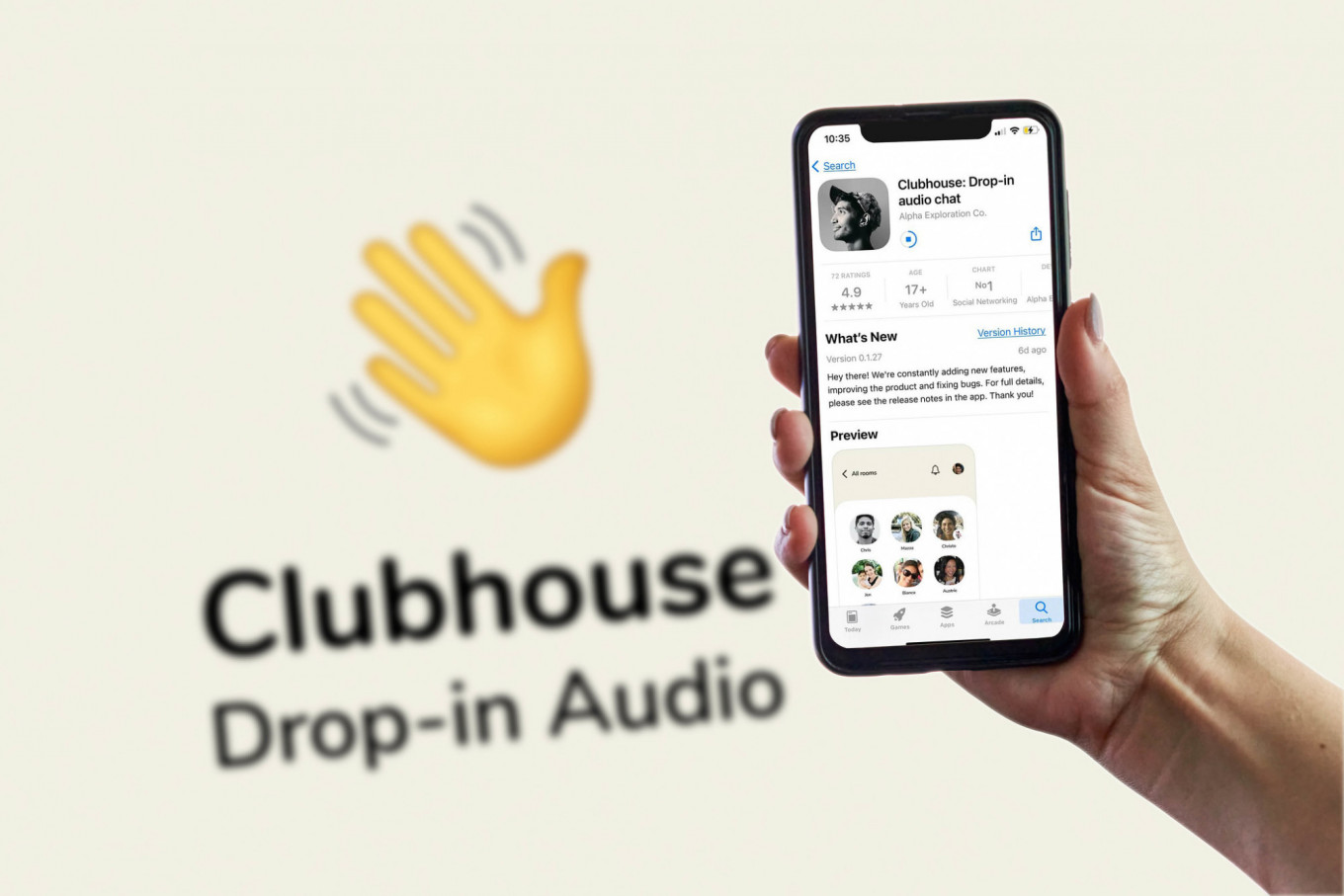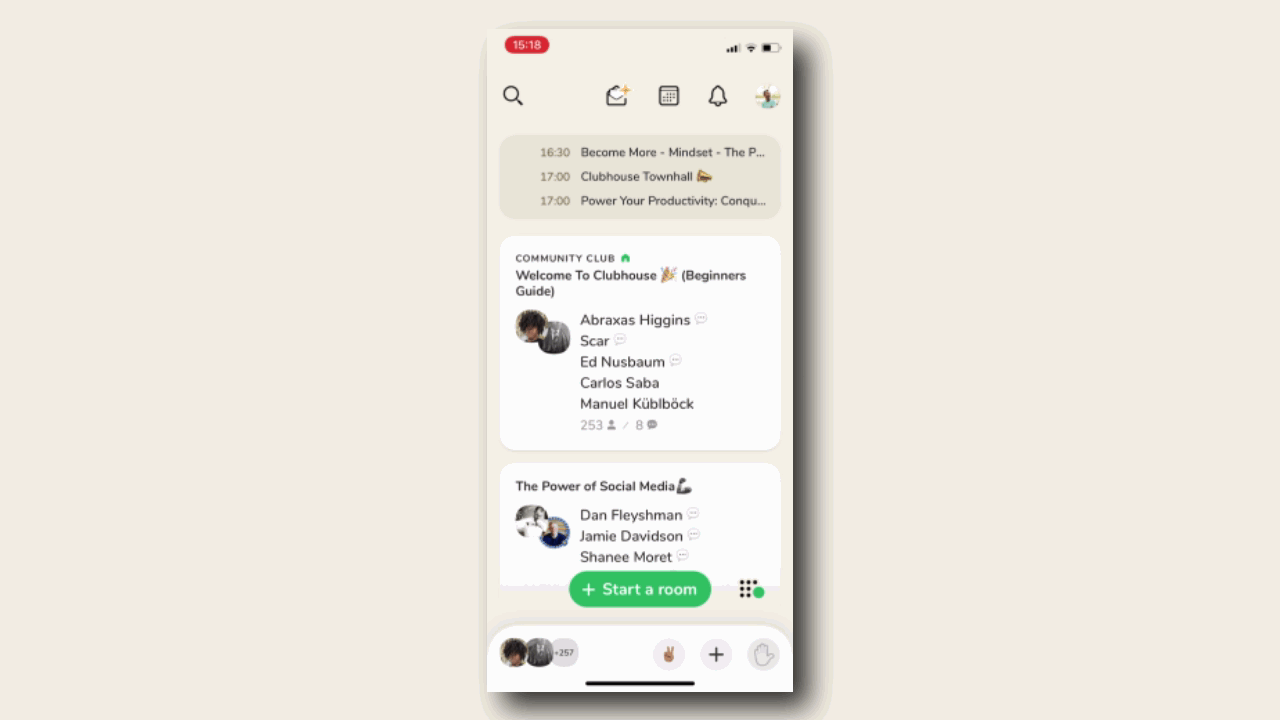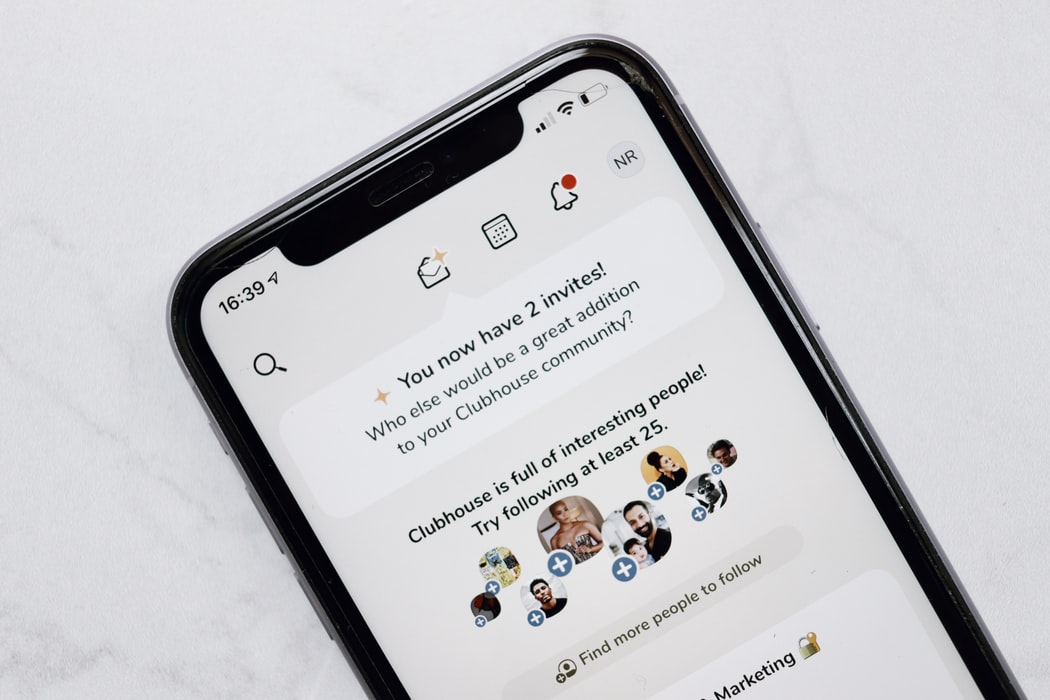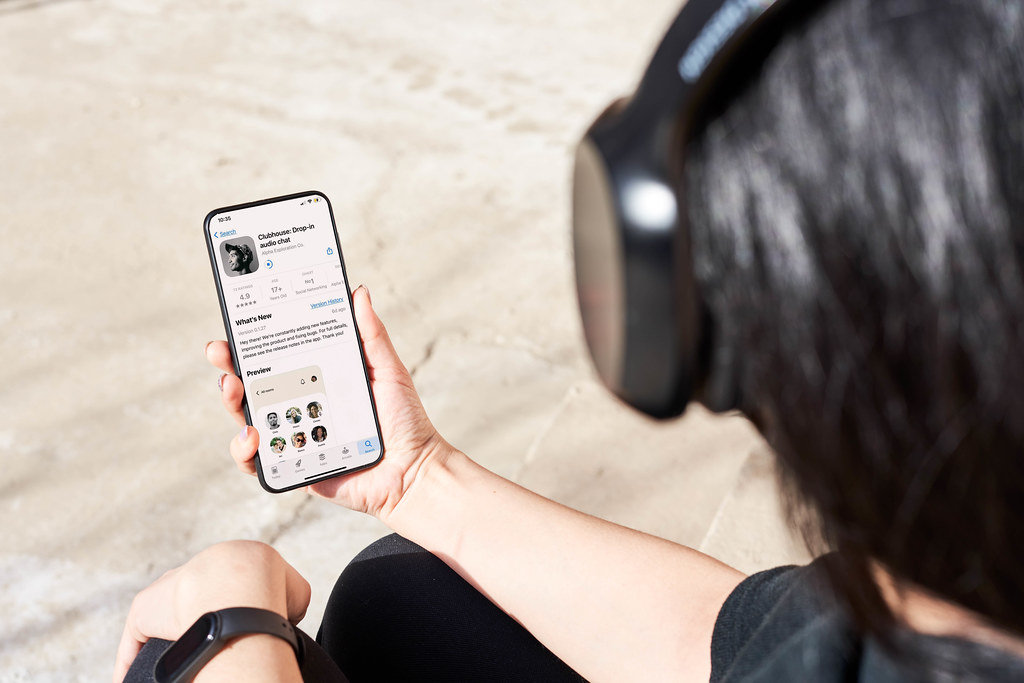Clubhouse is a voice chat mobile app that appeared in early 2020 when everybody was stuck at their homes and missed live communication. Less than a year after it became a worldwide hit that took social media app development and the development of voice chat apps in particular to new heights. If in December 2020 Clubhouse had about 600K of active users, in 2023, it has over 10 million users. What’s even hotter, the new social network startup is estimated at about $4 Billion. There were even times when Twitter reportedly wanted to buy Clubhouse.
Contents:
Twitter itself, Facebook, LinkedIn, Spotify, and others are now racing to introduce similar audio chat features into their products. Many entrepreneurs think about how to make a voice chat app of their own and rightly so. As Instagram showed us with their Stories (another feature that everybody else mimicked) it pays a lot to be the first. So let’s talk about voice chat app development in detail — reasons for its popularity, features, costs, design, and other information you need if you want to know how to create a voice chat app like Clubhouse.
How Clubhouse app works and why it’s so popular
So what is this Clubhouse app everyone is talking about?
Clubhouse is an audio-only social network where communication takes place in themed spaces called “rooms”, live. Its founders took a bit from podcasts, radio, Zoom, and audio streaming to form something new. During a brief onboarding process, you tell who you are and what are your interests, after which you are free to connect to different rooms according to your interests, listen to people talk, and join the conversations if speakers allow you to. You can create your own rooms and invite people in. The atmosphere of Clubhouse is similar to a cocktail party or a club, as you can see from its name.

Photo by Marco Verch from Flickr
Clubhouse is nothing new on the surface. Take Discord, for example. Another social media designed for instant messaging and focused on real-time communication. Yet, Clubhouse is one of the hottest new startups of the year. Instagram too was not a total novelty when it appeared. You could’ve just as well posted photos on Facebook at that time. But its developers concentrated on one particular feature and offered incomparably better options to make the most of it. What Clubhouse did, like any other successful B2C product, is to organically fit into people’s lives, exploiting their basic needs.
The are several features that distinguish the Clubhouse voice chat app from other social media applications and contribute to its popularity:
- Everything is live and happens in real time. As mentioned before, perfectly timed, it appeared during a crisis situation when people were starving for communication and were more than open to any new social media startup.
- It’s audio-only. The possibility of real-time communication per se can hardly impress anybody anymore. Clubhouse exploits the recent user inclination to voice technologies and voice messaging, distilling this feature and rejecting anything else that other social apps have like text posts or live video. There are millions of people to whom audio communication only is the best way to socialize.
- It’s great for both extroverts and introverts. You can actively participate in conversations and set up your rooms, or you can just listen quietly and leave without anyone noticing. It makes communication spontaneous and natural.
- There are celebrities there and you can talk to them. Unlike podcasts and interviews, there’s no wall between a speaker and a listener. Folks are excited to be able to connect with famous people in a live conversation, and there is an assortment of those. Clubhouse’s worldwide popularity was steadily rising during 2020 but it went through the roof when Elon Musk personally mentioned it on Twitter. A historical moment (for Clubhouse owners). Add Oprah, Jared Leto, Mark Zuckerberg, and Drake to the list of Clubhouse users and it’s becoming longer every day.
What makes voice chat apps useful for business
Clubhouse is an add-free space at the moment, its developers only recently announced the monetization scheme for creators. But a voice-only social network with live communication can be useful for a business in many different ways: for creating a personal brand, finding new acquaintances, investors, or personnel.
A strong bond created between speakers and the audience is perfect for:
- Entrepreneurs and startup founders — for connecting with prospective audiences and finding new avenues of raising the budget for the product.
- Various specialists — for conducting masterclasses and training sessions, especially in marketing, business, psychology, and IT.
- Media personalities and entertainers — people like stand-up comedians or DJs enjoy one of the app’s main advantages — getting instant feedback from their audiences, like during a live performance.
You can even use Clubhouse as a sort of substitute for dating applications. While it’s devoid of familiar dating apps features like arrays of pictures, information-packed profiles, and personal messages, you can still find your soulmate by shared interests if they leave a Twitter handle or whatever means of contact in their user profile. Many people find this absence of imposed communication a welcome improvement.
How to build a voice chat app like Clubhouse
Features of an audio chat app
So what features does Clubhouse have and what seems to be the set needed for any similar voice chat application? The core features of Clubhouse are:
- Onboarding
A process during which new users are greeted and asked to provide some personal information and indicate their interests.
- Customizable profile
In the case of Clubhouse, it’s fairly minimal. It only needs your name (preferably the real one, but you can submit a nickname and change it later, however, only once), one picture, and a short bio. You can also provide other social media handles if you want.
- Rooms
In other words, spaces where people actually communicate, like conference calls in Zoom, only with the majority of people listening in. They can be public when any person can join in or private. A room capacity is currently 8000 participants with different roles like speakers, hosts, guests, moderators, etc.
- Activity feed
This is an essential part of any social media app and a secret for constant and continuous user retention. Unlike other social apps though, Clubhouse’s activity feed doesn’t bombard users with lengthy reels of content. What they see in their feed is mostly about who followed them, and what events are happening or going to happen.
- Live audio streaming and crosstalk
Speech being the main point of a voice chat application, your app should be capable of handling quality audio content streaming with the ability to cross-talk. To avoid turning a room into a fish market, in Clubhouse a user has to press a “Raise a hand” button to indicate that they want to speak up and are able to do so only after a speaker or moderator lets them.
- Notifications
To help users be in the know of what is happening in real time, add notifications to your social app. With social media being busy places, especially in the case of such a popular app like Clubhouse, it’s easy to drive users crazy with constant notifications which is often the case. In Clubhouse, you can set your notification frequency and temporarily pause them for a set amount of time.
- Clubs
These are like groups in any other social network. In a group voice chat app, you can become a part of a club and find like-minded people with the same interests.
- Search
In Clubhouse, you can search for people you want to follow or browse topics that you are interested in.
- Payment gateways
Clubhouse owners are currently working on introducing paid features into their app. Letting people join rooms for a fee seems to be the most obvious. Either way, you’ll need to integrate popular payment systems like Amazon Payment, PayPal, Braintree, Stripe, and others in your app.
Clubhouse app design
Every part of the Clubhouse design is a curious but effective mix of familiar and unique patterns.

Image by Carlos Saba
Clubhouse is an uncommon social network app, even just looking at it. It has a peculiar interface with a solid fill of a warm tan/beige shade as a background which is not widely used in app design now. Plus, as we already mentioned, its interface does not have a news feed in the ordinary sense of this word, or the ability to send messages. You can communicate only inside the rooms and only with your voice. Many users describe their first experience using Clubhouse as somewhat disorientating like they suddenly found themselves in a bustling and unfamiliar cafe.
After a while though, they all seem to navigate with no difficulty, thanks to the app logic that’s quite straightforward and intuitive. Right from the onboarding, there isn’t any feature that takes too much of your time or presents any difficulty. Just a few clicks (or, rather, taps) and you are ready to dive into a conversation. In general, there are only three major entities you have to deal with: People, Rooms, and Clubs, making the app quite simple.
By choosing not to reinvent any wheels, letting users follow familiar UX patterns widely accepted in social media app development, using a conventional set of icons, and limiting the number of design entities, the Clubhouse voice chat app’s developers and designers reached the effect of simplicity and ease of use.

Photo by Nathana Rebouças from Unsplash
There’s another thing that perfectly shows the creative side of Clubhouse designers and contains the app’s essence — the app icon. Instead of the usual approach with a vector logo as an app icon, Clubhouse has black-and-white headshots of people. It makes an app icon stand out among others, there’s literally nothing like it. It feels more fresh, unconventional, emotional, and personal while highlighting the most attractive feature of the app that lies at its heart — the ability to connect to real people. The application, with all its design and positioning, speaks of a relaxed, friendly atmosphere.
Photo by William Krause from Unsplash
Voice chat app monetization methods
The main opportunities for monetizing a social network app are:
- Advertising
- Paid services
- Direct sales
- Selling statistical data.
There’s no information on Clubhouse’s plans to use the majority of them and, as a matter of fact, this absence is one of the most discussed Clubhouse-related topics. It seems like it’s still possible for its founders to keep the wheels running with the help of venture capital. But this can’t last forever, so like any other commercial project, Clubhouse will eventually explore other possibilities. To date, they only launched the mentioned above ability for users to send money to their favorite creators. Other ways to monetize a similar app for voice chat may be brand collaborations, sponsored rooms, paid club memberships, placing lead generators, etc.
Voice chat app development cost, time, and tech stack
Now let’s see approximately how much time it’s going to take to create a voice chat app like Clubhouse. At this moment, there’s no accurate information on the tech stack of the Clubhouse app, confirmed by its developers. You can only surmise that its most demanding aspect is the ability to provide good-quality audio streaming. At the same time, Clubhouse’s thing is that conversations don’t get recorded and are available only live. According to the official information, Clubhouse does not store audio data so there’s no need to allocate a lot of resources to audio storing servers.
The cost of making a voice chat app, like any app cost, depends on which app development agency takes on the job, where its workforce is situated geographically, and what’s its experience and specialties. The main point, however, is how much work is included in the price — i.e. what features an app is going to have in terms of design and development.
Some mobile startup founders prefer to build their products for both platforms, iOS and Android, at once. Although it’s usually more beneficial to test your app on one mobile platform first. Which one depends on your target audience. Exactly like Clubhouse developers did: at first it was only available for iOS devices. Only later they released the Android version.
It’s safe to say that you’ll need an app development team consisting of:
- 1-2 iOS developers
- 1 backend developer
- 1 UI/UX designer
- 1 QA engineer
- and 1 project manager to coordinate the process.
All in all, depending on the complexity, the amount of time needed to build an audio-only social app is approximately 1500 hours for one platform including the work of all team members. So, taking our outsource app development rate as an example, the cost of making a similar voice chat app would be about $82 000.

Photo by Marco Verch from Flickr
There’s room for opportunity. A lot of it
If you think about it, the idea of a social network with voice communication only seemed to be on everybody’s mind so it was only a matter of time until something like Clubhouse emerged. It turned out to be more attractive to its target audience than ordinary podcasts or television talk shows because you could now ask speakers questions and even engage in casual, unpolished conversations with famous and influential people. It’s better than Twitter or Facebook for people who prefer voice communication. It kind of reimagined the genre of voice communication and made it especially appealing creating an atmosphere of friendly talk.
Currently, Clubhouse still has a long way ahead with new features and changes to its design and functionality introduced every few weeks. Facing hard competition from other major players in the digital market, it’s difficult to say what’s going to happen with it in the future and whether it would be able to stand against the tide. One thing is clear: the Clubhouse phenomenon showed that no matter how seemingly saturated the market is, you can make a major splash with your startup if you find the right approach to your target audience and focus on what they need at the moment. As long as an app is useful, functional, and unique at least in some respect, it has a chance to stand out.
Thinking about how to make a voice chat app of your own? As a mobile app development company, we have a lot of experience designing and developing mobile apps that users find engaging. Contact us for a free consultation on the best deal for your mobile app idea.
